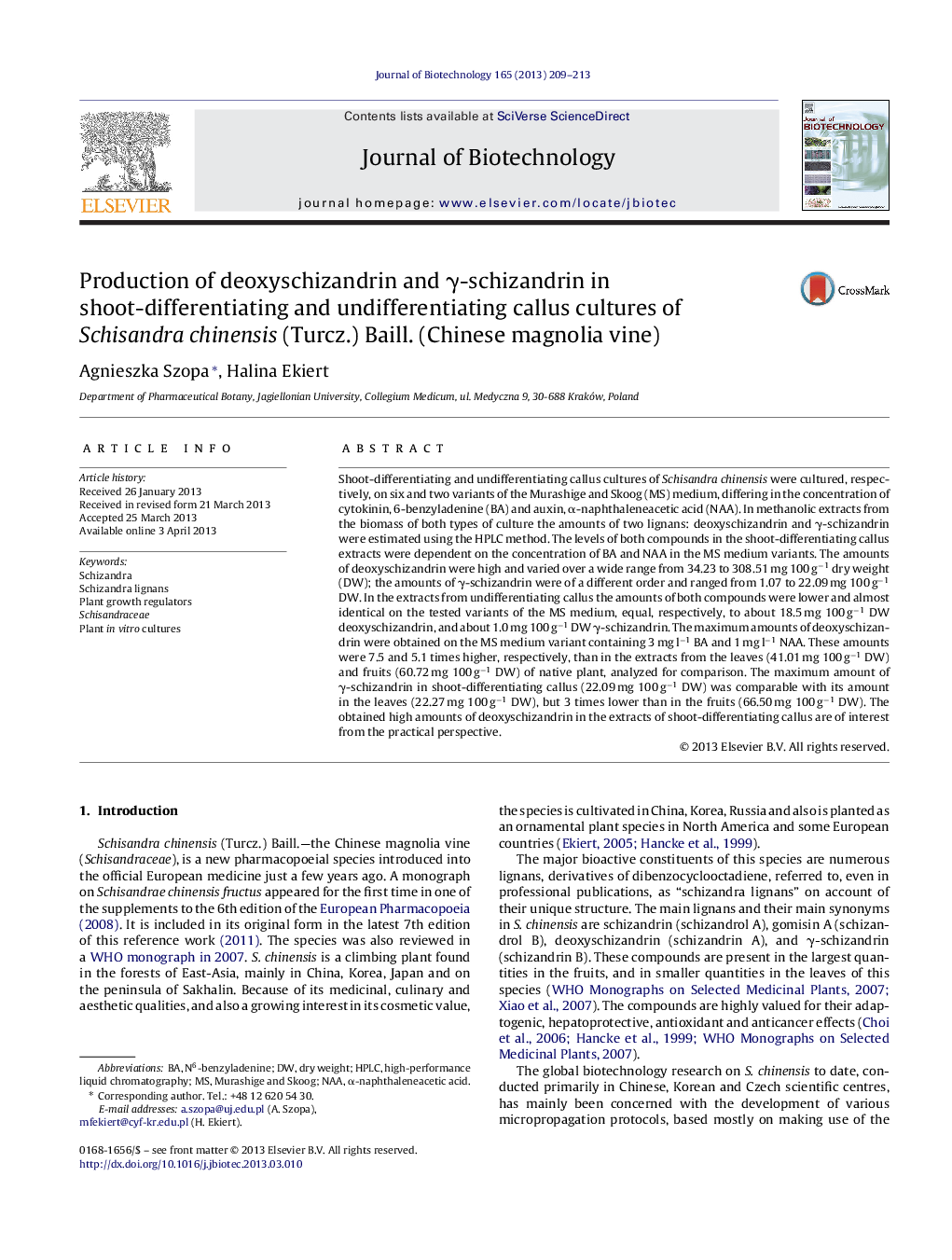| Article ID | Journal | Published Year | Pages | File Type |
|---|---|---|---|---|
| 6491841 | Journal of Biotechnology | 2013 | 5 Pages |
Abstract
Shoot-differentiating and undifferentiating callus cultures of Schisandra chinensis were cultured, respectively, on six and two variants of the Murashige and Skoog (MS) medium, differing in the concentration of cytokinin, 6-benzyladenine (BA) and auxin, α-naphthaleneacetic acid (NAA). In methanolic extracts from the biomass of both types of culture the amounts of two lignans: deoxyschizandrin and γ-schizandrin were estimated using the HPLC method. The levels of both compounds in the shoot-differentiating callus extracts were dependent on the concentration of BA and NAA in the MS medium variants. The amounts of deoxyschizandrin were high and varied over a wide range from 34.23 to 308.51 mg 100 gâ1 dry weight (DW); the amounts of γ-schizandrin were of a different order and ranged from 1.07 to 22.09 mg 100 gâ1 DW. In the extracts from undifferentiating callus the amounts of both compounds were lower and almost identical on the tested variants of the MS medium, equal, respectively, to about 18.5 mg 100 gâ1 DW deoxyschizandrin, and about 1.0 mg 100 gâ1 DW γ-schizandrin. The maximum amounts of deoxyschizandrin were obtained on the MS medium variant containing 3 mg lâ1 BA and 1 mg lâ1 NAA. These amounts were 7.5 and 5.1 times higher, respectively, than in the extracts from the leaves (41.01 mg 100 gâ1 DW) and fruits (60.72 mg 100 gâ1 DW) of native plant, analyzed for comparison. The maximum amount of γ-schizandrin in shoot-differentiating callus (22.09 mg 100 gâ1 DW) was comparable with its amount in the leaves (22.27 mg 100 gâ1 DW), but 3 times lower than in the fruits (66.50 mg 100 gâ1 DW). The obtained high amounts of deoxyschizandrin in the extracts of shoot-differentiating callus are of interest from the practical perspective.
Keywords
Related Topics
Physical Sciences and Engineering
Chemical Engineering
Bioengineering
Authors
Agnieszka Szopa, Halina Ekiert,
